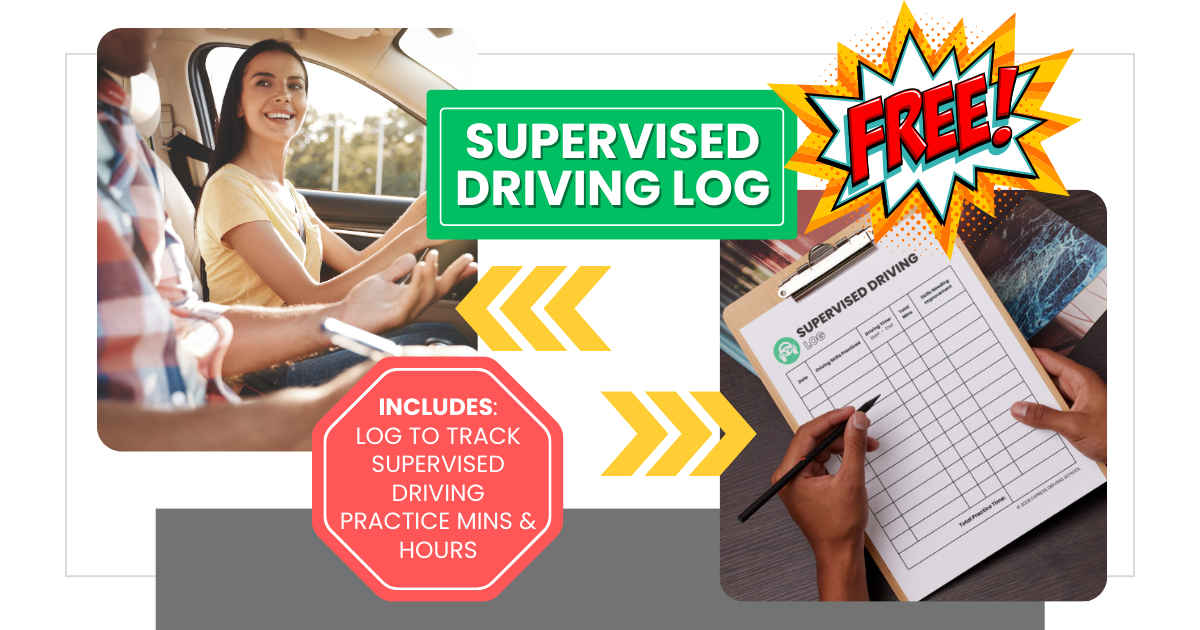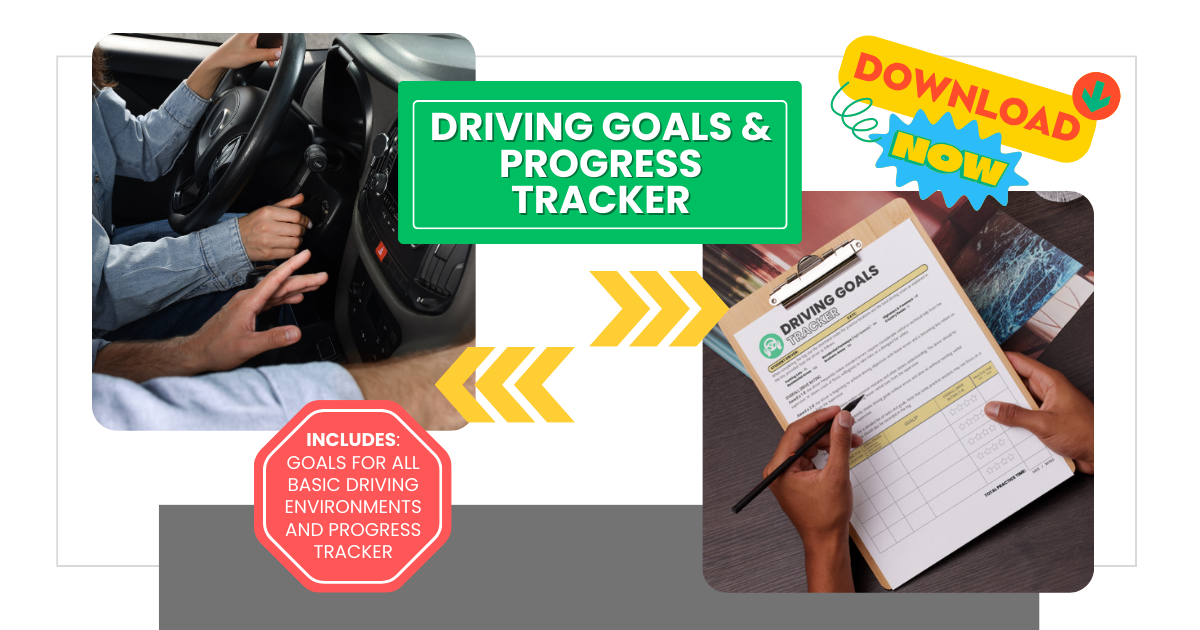Lane Positioning and Driving Straight | RESIDENTIAL AREAS
| Driving Lessons |
Driving in residential areas presents a unique set of challenges, including navigating around parked cars, pedestrians, and cyclists, while maintaining the correct position within your lane. This blog post outlines a step-by-step approach to help new drivers develop the skills necessary for safe driving in these environments.
Goal
The new driver will maintain the safest position for the car within the lane.
The Learning Environment
Look for a quiet residential neighborhood with very little traffic and few parked cars, pedestrians, lane markings, and intersections. Schedule practice during the day with dry pavement and no adverse weather.
Materials Needed
The Supervised Driving Log (Optional) – Although it was originally created for California Teens Learning to Drive, this FREE and COMPLEMENTARY driving log is an essential tool for all new drivers. Keeping a driving log is great for tracking how you’re doing, finding what you need to get better at, and feeling good about your wins. It helps you learn in an organized way, focusing on key skills to make you a better driver faster. This careful tracking builds confidence and speeds up your path to driving well.
Activity Steps for Lane Positioning and Driving Straight
Step 1: Understanding Lane Markings
Before hitting the road, it’s crucial to understand the different types of lane markings and what they signify. Lane markings provide essential guidance for positioning your vehicle on the road. Here’s a quick rundown:
- No Lines: Roads without markings require you to judge the center of the road and keep an equal distance from both sides.
- Single Line: A single line, often seen in residential areas, suggests caution. Stay on your side of the line, maintaining a safe distance from it.
- Multiple Lines: Roads with multiple lines, including center lines and lane dividers, clearly define where your vehicle should be. Stay within your lane, centered as much as possible.
Use diagrams or take a virtual tour online to familiarize yourself with these markings before you start driving.
Step 2: Commentary Drive
Begin with a commentary drive with the student driver as a passenger. Drive through a residential area, offering commentary on how you’re maintaining lane discipline. Point out parked cars, pedestrians, and cyclists, and demonstrate how to adjust your position safely to account for these obstacles. This observational drive is a valuable lesson in real-world lane positioning.
Step 3: Hands-on Practice
Now, switch roles and let the learner take the wheel. Start on quieter residential streets where they can practice maintaining proper lane position without the stress of heavy traffic. Guide them on how to adjust their speed based on road conditions and the presence of potential hazards.
Step 4: Practice Turning and Navigating Intersections
Turning and handling intersections are critical skills in residential driving:
- Approaching Intersections: Teach the learner to signal their intentions early and position their vehicle correctly, depending on the turn they intend to make.
- Executing Turns: Practice making safe left and right turns, emphasizing the importance of staying in the correct lane during the turn and realigning the vehicle properly afterward.
Step 5: Defensive Driving
Defensive driving is about scanning for potential hazards and being prepared to respond:
- Awareness: Stress the importance of constant scanning for oncoming cars, cyclists, and pedestrians. Teach how to adjust lane positioning and control speed to ensure safety.
- Adjusting Speed: Highlight the need to slow down when necessary, especially in densely populated or visually obstructed areas.
Common Errors to Avoid
New drivers often make a few common mistakes related to lane positioning:
- Driving too close to the curb, which can lead to clipping parked cars or losing control.
- Veering too close to the center lane, increasing the risk of head-on collisions.
- Swerving back and forth within the lane, which can confuse and endanger other road users.
Signs of Progress
You’ll know the new driver is mastering lane positioning when they consistently:
- Maintain a safe and steady position within their lane or on the road.
- Make smooth and controlled turns, correctly signaling and positioning the vehicle.
- Show awareness of their surroundings especially for potential hazards, adjusting their positioning and speed as necessary.
Use a progress tracker to keep track of skills that have been mastered and those that still need practice or improvement. Express Driving School proudly offers a Driving Skills and Goals Progress Tracker to help student drivers and their driving coaches with assessments and evaluations by providing a rating scale that is simple and easy to use.
Lane Positioning and Driving Straight | RESIDENTIAL AREAS
Teaching new drivers about proper lane positioning in residential areas is about building confidence, awareness, and respect for road rules and other users. With patience and practice, these skills will become second nature, leading to safer driving experiences for everyone involved.
Drive with Confidence!
Keep up with all the latest driving news. Expolre our blog packed with essential tips and expert advice on all things related to DRIVING!






